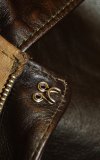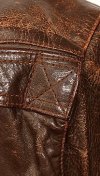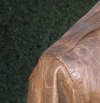ZuZu
Well-Known Member
The intersection of the collar, windfap and zipper is a detail which is distinct to each original A-2 maker. Aero had a distinct method of joining these three parts- careful observation will show it to be constant across these 3 contracts (21996,18775,15142) although depending on wear it can seem muddled.

Last edited:



